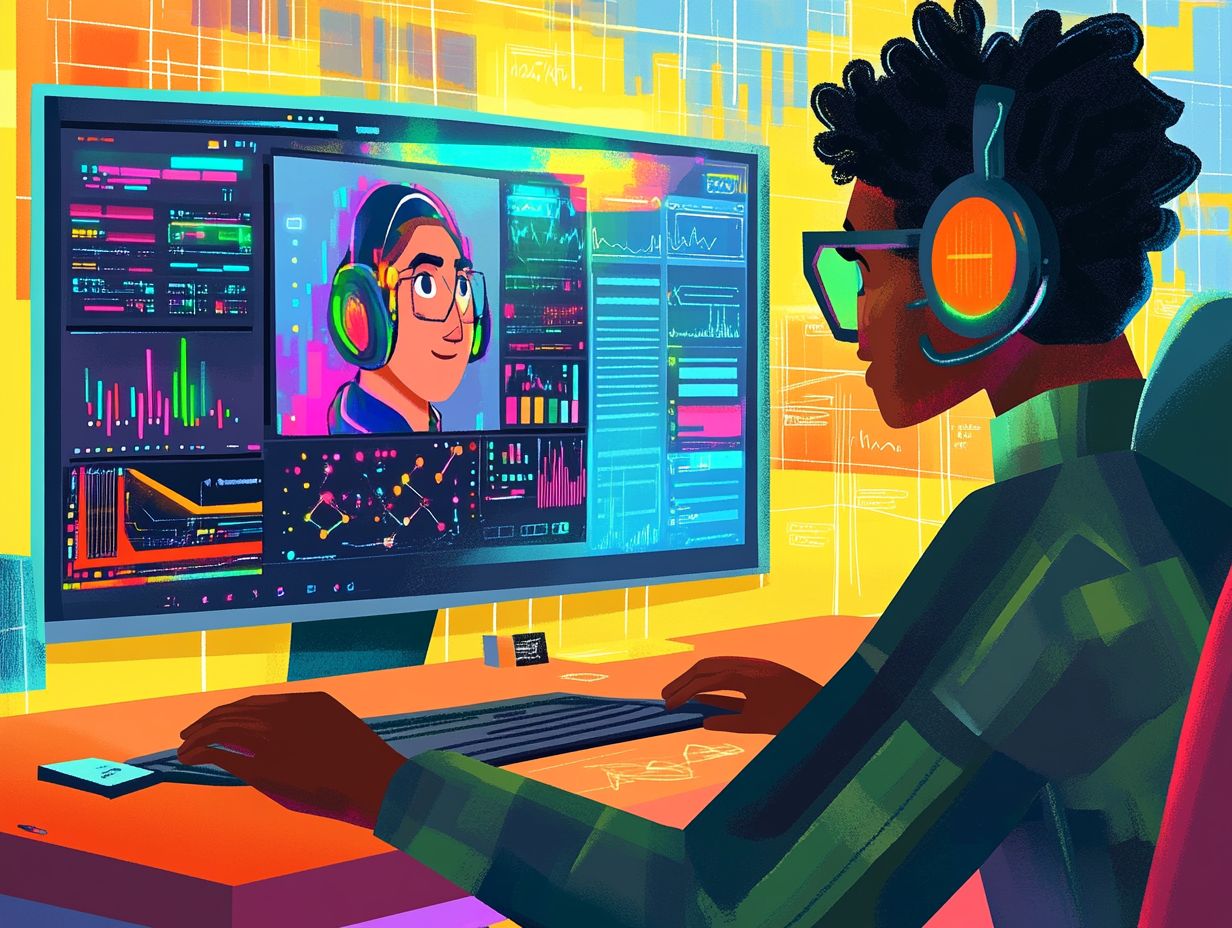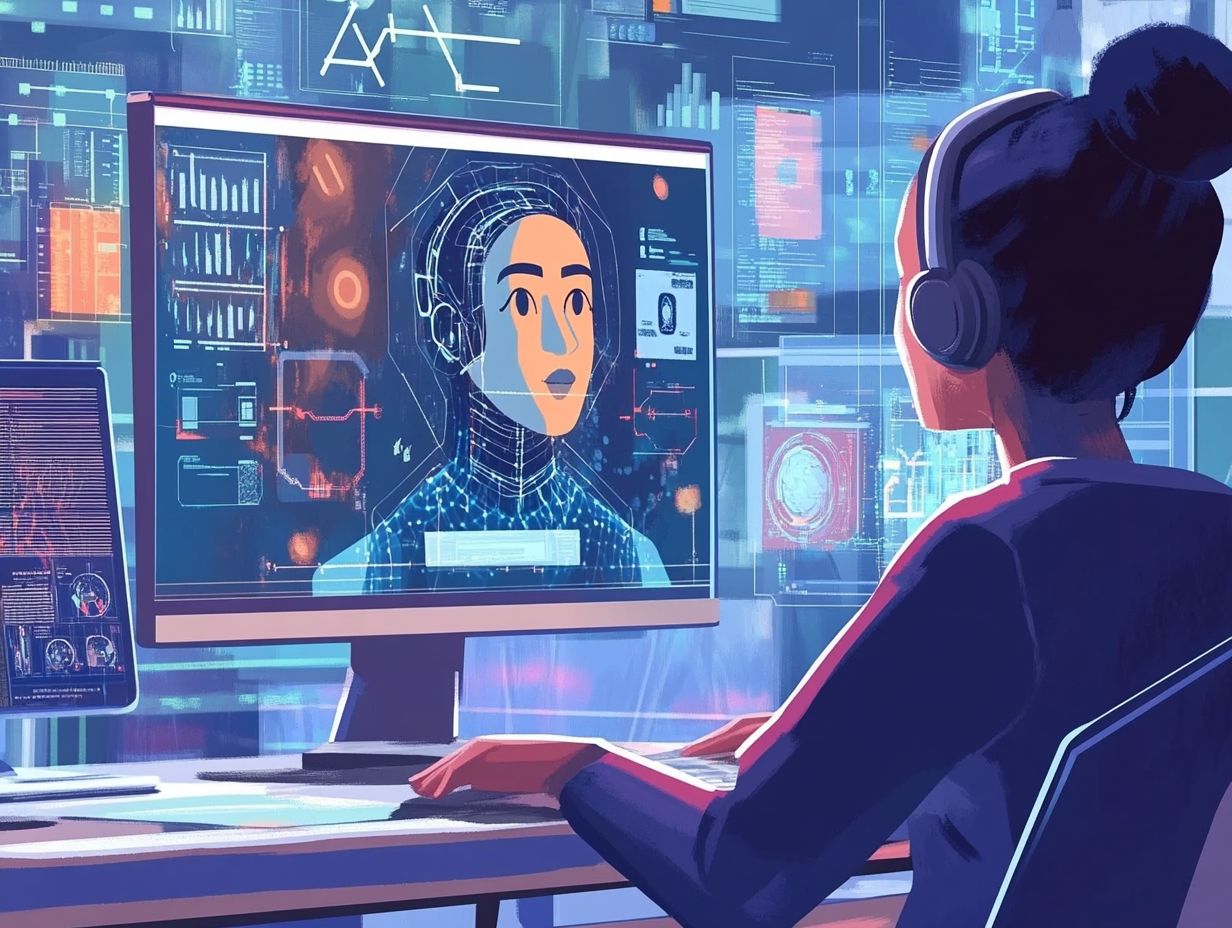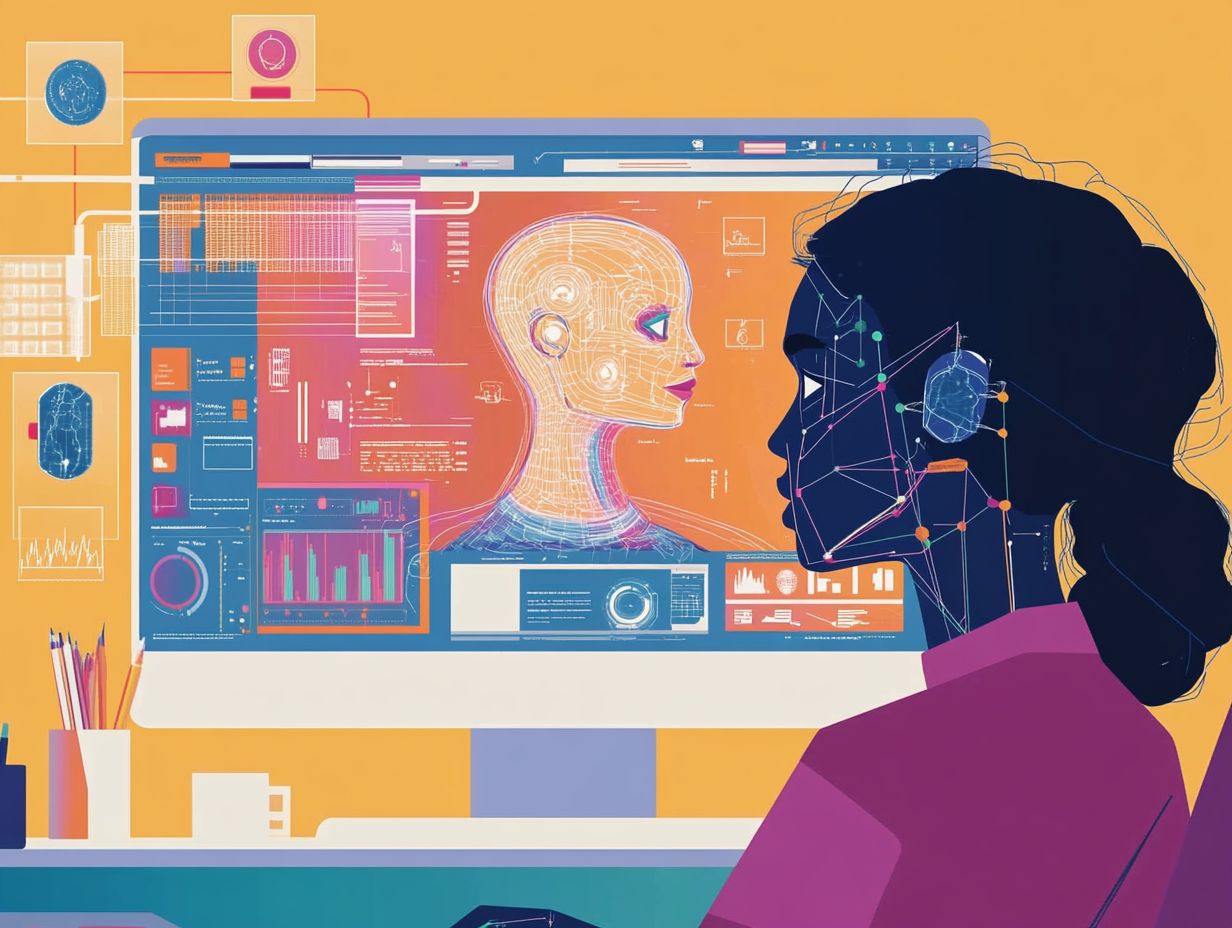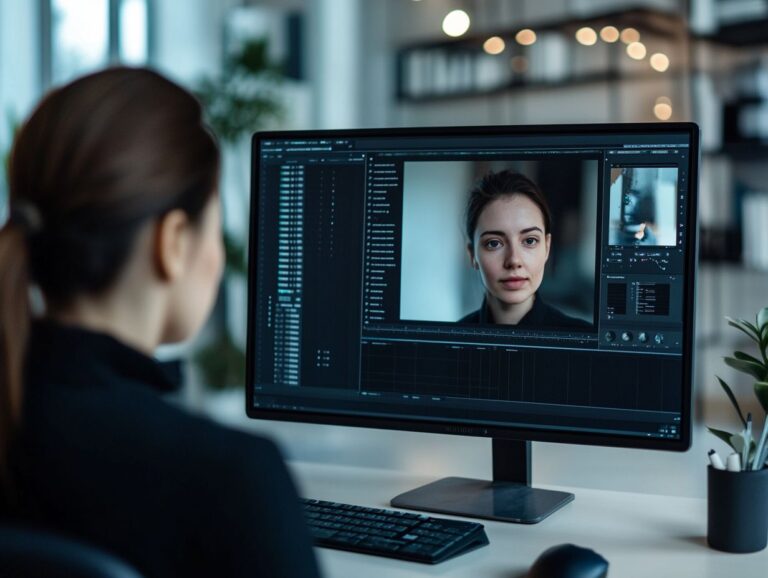How to Make an Image Talk Using AI?
Image captioning is the process of automatically generating meaningful descriptions or captions for images using advanced technologies such as image recognition, natural language processing (NLP), and machine learning. This process enhances accessibility and improves the experience of users interacting with images.
In this article, we will explore the intricate details of image captioning, including its advantages and disadvantages, as well as the steps for implementation. Additionally, we will discuss various use cases and provide recommendations on the best tools for the image captioning process.
Contents
Key Takeaways:
What is AI Image Captioning?
AI Image Captioning is an innovative technology that employs advanced AI algorithms to automatically analyze and describe images, thereby enhancing our perception and interaction with visual content.
By leveraging sophisticated AI techniques, this method generates engaging narratives around images, which can be utilized in various sectors, including marketing campaigns, educational content, and customer support.
The capabilities of AI-driven photo solutions offer a unique opportunity for personalized avatars and facilitate the creation of talking head videos that resonate with audiences.
How Does AI Image Captioning Work?
AI image captioning integrates image recognition and natural language processing to enable computers to recognize and describe the contents of an image. The process starts with image recognition, during which an AI system analyzes and identifies the key features of a clear front face or objects within the image.
Following this, machine learning algorithms enhance the accuracy of the descriptions over time through user interactions and feedback.
1. Image Recognition
Image recognition plays a crucial role in AI image captioning, enabling AI systems to analyze and identify visual content within images. This process typically involves algorithms that detect various characteristics, such as recognizing clear frontal faces, differentiating between different objects, and understanding context all of which contribute to generating accurate captions.
Computer vision techniques, particularly those that utilize neural networks, are employed to process and extract meaning from the complex features present in images. For instance, convolutional neural networks (CNNs) are especially effective in detecting patterns and objects, allowing for more nuanced interpretations of visual data.
Beyond aiding image captioning, these technologies are also utilized in marketing and corporate communication applications, such as creating talking avatars. Image recognition enables these avatars to interact more dynamically with users by interpreting visual inputs in real-time and providing relevant context.
2. Natural Language Processing
Natural Language Processing (NLP) is the technology that enables machines to understand, interpret, and generate human language. In the context of AI image captioning, NLP plays a crucial role by taking visual data and transforming it into corresponding text descriptions.
With the help of NLP, AI systems can also generate speech and voiceovers for talking head videos, ensuring that the captions are not only accurate but also contextually relevant and relatable for diverse audiences.
3. Machine Learning
Machine learning is a subset of artificial intelligence (AI) that enables systems to learn from data and improve over time. It plays a vital role in AI image captioning technology, enhancing the accuracy of image analysis and the generation of descriptions.
The algorithms that adapt and improve based on user input and interaction form the foundation of personalized avatars, facilitating more efficient communication through progressively accurate captioning methods.
What Are the Benefits of AI Image Captioning?

AI image captioning offers numerous advantages across various industries, particularly in enhancing accessibility for the visually impaired, optimizing search engine performance, and improving user experience.
By generating descriptive captions for images, AI technologies facilitate a better understanding of visual content and enhance customer engagement through personalized marketing, targeted campaigns, and the use of explainer videos.
1. Accessibility for the Visually Impaired
One of the most significant features of AI image captioning is its ability to enhance accessibility for the visually impaired, allowing them to engage with visual content through descriptive text that captures the essence of images. This capability not only promotes inclusivity but also enables brands to expand their reach by providing engaging content that caters to diverse audiences, including those with visual disabilities.
Utilizing sophisticated algorithms, AI systems can generate high-quality captions that convey not only the objects present in images but also the emotions and contexts associated with them, helping visually impaired individuals grasp the narrative behind a picture. For instance, social media platforms and e-commerce websites have begun integrating these features, making it easier for users to access information related to products or events.
Such innovations significantly enhance customer support and engagement, as users can interact with content in a manner similar to their sighted peers. Ultimately, the incorporation of AI image captioning creates new channels for communication and improves the overall experience for the visually impaired community.
2. Improved Search Engine Optimization (SEO)
One significant advantage of AI image captioning is improved search engine optimization (SEO). Descriptive captions facilitate better indexing of images by search engines, thereby enhancing the online visibility of content.
By delivering optimized results through accurate and relevant captions, brands can enhance their content production strategies and leverage interactive media to drive more traffic to their websites.
3. Enhanced User Experience
AI image captioning significantly enhances user experience by providing personalized content that resonates with individual users, ultimately improving customer engagement.
By utilizing clear and descriptive captions, brands can create a more immersive experience, which contributes to successful marketing campaigns and fosters better relationships with their target audiences.
The application of AI techniques in image captioning strengthens the connection between consumers and brands, effectively communicating the brand’s message and enhancing discoverability across various digital channels.
When users are presented with content that feels tailored to them, their interest and engagement levels rise dramatically, thereby increasing outreach.
Implementing this technology enables businesses to bolster their marketing campaigns, ensuring that their messages are consistent and impactful, which leads to higher conversion rates and increased customer loyalty in a highly competitive market.
What Are the Limitations of AI Image Captioning?
AI image captioning systems face several limitations, including challenges related to accuracy and reliability, cultural and contextual understanding, and privacy concerns.
Although the advantages of these systems are evident, these limitations can affect the overall effectiveness of AI technologies. Therefore, ongoing improvements and ethical considerations are necessary to ensure that the technology remains beneficial while respecting user privacy.
1. Accuracy and Reliability
The accuracy and reliability of AI image captioning are crucial factors that determine its effectiveness, as misinterpretations can result in inappropriate or misleading captions. High levels of accuracy in captioning rely on stringent image requirements and regular training of AI models to enhance their understanding and processing capabilities.
For example, if the AI is presented with an image featuring overlapping elements, such as a dog playing in front of a child, it may misidentify the primary subject and generate an inaccurate caption. Such errors highlight the importance of providing precise input data; images with prominent subjects and clear backgrounds are generally easier for AI technologies to interpret. Additionally, variations in lighting, angles, and context can further complicate the captioning process.
As AI systems continue to evolve, addressing these nuances is essential for refining image requirements, thereby improving the quality of captions produced by AI and ensuring they accurately reflect the visual information presented.
2. Cultural and Contextual Understanding

Cultural and contextual understanding poses a significant limitation for AI image captioning, as AI systems often struggle to accurately interpret images that incorporate nuanced cultural references or context-specific elements.
This lack of understanding can lead to poor customer engagement and diminish the effectiveness of marketing campaigns that depend on visual storytelling. Interpretation issues can arise in various scenarios, such as when an AI misinterprets an iconic symbol from a particular culture or fails to grasp the subtleties of a culturally specific gesture.
For instance, an AI might associate a gesture that holds deep meaning in one culture with an entirely different significance in another, resulting in content that is either confusing or potentially offensive. This highlights the importance of developing AI systems with a thorough understanding of cultural nuances to avoid significant misinterpretations.
To enhance the accuracy and effectiveness of AI image captioning systems, it is essential that they are trained to incorporate a diverse range of cultural perspectives, allowing them to perceive and interpret imagery in a way that resonates authentically with all audiences.
3. Privacy Concerns
Privacy concerns pose a significant challenge to AI image captioning, as the collection and analysis of personal images raise ethical issues surrounding data protection and user consent. Developers and organizations must establish clear guidelines that prioritize user privacy in the implementation of AI technologies. This issue becomes increasingly pressing as the technology continues to evolve and the potential for misuse expands.
Data collection practices must be transparent, ensuring users are fully informed about how their images will be utilized. Ethical responsibilities include not only obtaining consent but also ensuring that data is securely stored and used solely for its intended purpose. Employing techniques such as image anonymization and implementing robust encryption protocols can help mitigate these risks.
By fostering a culture of accountability and prioritizing user rights, organizations can create more trustworthy applications of AI, aligning technological advancements with ethical considerations that protect individual privacy.
How to Use AI Image Captioning?
To achieve effective AI image captioning, it is important to follow several key steps.
- First, choose reliable AI tools.
- Next, upload high-quality images that meet the necessary requirements for optimal results.
- After the AI generates captions, take the time to edit them for accuracy and clarity.
- Finally, track the results once the images have been uploaded to evaluate their performance.
1. Choose a Reliable AI Image Captioning Tool
The importance of selecting a reliable AI image captioning tool stems from the fact that some tools outperform others, significantly optimizing both performance and user experience. A thorough evaluation of the available tools in the market, based on user reviews, features, and support, can lead to the most effective solutions for users content production and marketing campaigns.
When choosing an AI image captioning tool, it is crucial to consider factors beyond the primary features of real-time captioning and multilingual support. Most importantly, the underlying technology that drives its accuracy should be taken into account. Tools powered by machine learning algorithms generally provide more reliable and contextually relevant captions, which help keep readers engaged.
Users often share their experiences with various tools online, making user reviews valuable indicators of performance. Google Cloud Vision and Microsoft Azure Cognitive Services stand out as two highly regarded tools known for their comprehensive features and versatility.
Incorporating such tools into workflows can help creators enhance their visual content strategies while also improving accessibility and SEO performance.
2. Upload High-Quality Images
Yes, AI Image Captioning can work with low-quality images; however, the accuracy of the generated captions is directly related to the quality of the visual input. To enhance the effectiveness of AI Image Captioning systems, it is advisable to upload higher-quality images that meet specific photographic standards. For instance, ideal lighting conditions can help the AI systems detect subtle features, such as a person’s eyes or the contours of their face.
Additionally, a neutral facial expression can minimize the number of variables the AI systems must consider, subsequently increasing the accuracy of their output.
The composition of the images is another critical factor influencing the effectiveness of AI Image Captioning systems. Images with clear focal points and minimal background distractions, along with proper framing, enable AI technology to better understand the context in which subjects are presented.
Furthermore, using relevant keywords in the metadata can aid in retrieval and provide the systems with additional context for comprehending the images more effectively. By ensuring that their images are well-composed and adequately described, users can achieve more interesting and contextually relevant captions.
3. Edit and Customize Captions
Editing and customizing captions generated by AI image captioning is a crucial step that enables users to tailor content to better suit their audience and enhance user engagement.
Through this process, brands can incorporate their unique voice and style into automated captions, creating a more personalized experience for viewers. By utilizing various editing tools and techniques, users can fine-tune the language, tone, and structure of AI-generated captions, allowing them to resonate more deeply with their specific target demographic.
Employing software that offers adjustable settings for tone and style not only saves time but also give the power tos brands to maintain consistency across their messaging. Understanding audience preferences and integrating relevant keywords can significantly increase interaction rates.
To achieve this, brands should analyze feedback and engagement metrics to ensure that captions not only reflect their identity but also effectively captivate their intended audience, ultimately fostering a stronger connection.
4. Monitor and Improve Results

Monitoring and improving the results of AI image captioning is essential to ensure that the content remains relevant and engaging over time. By routinely measuring performance indicators such as click-through rates, social shares, and user dwell time, one can assess the effectiveness of the captions for users.
Analyzing audience demographics allows for more effective tailoring of captions to meet specific preferences. Additionally, A/B testing different caption styles or formats can help identify the factors that drive user engagement.
This iterative process fosters innovation and enables closer alignment of captioning strategies with audience needs, allowing brands to respond quickly and enhance engagement while maximizing the effectiveness of AI-driven solutions.
Frequently Asked Questions
Can I make an image talk using AI?
Yes, using AI technology you can make an image talk by creating a digital voice or using a pre-recorded one.
What software do I need to make an image talk using AI?
There are various software options available such as Adobe Character Animator, CrazyTalk, and Reallusion’s iClone that use AI to make images talk.
How does AI make an image talk?
AI uses advanced algorithms and machine learning to analyze and interpret human speech and movement, then applies it to the image to create a talking effect.
What type of images can be made to talk using AI?
AI technology can be used on both 2D and 3D images, including cartoons, illustrations, and photographs.
Do I need any technical skills to make an image talk using AI?
No, most AI software designed for creating talking images have user-friendly interfaces and do not require extensive technical skills.
Can AI make an image talk in different languages?
Yes, depending on the software and settings, AI can be used to create talking images in various languages by inputting the desired text for the image to speak.







